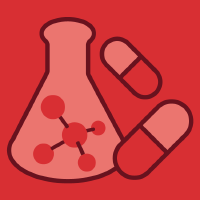Topic Menu
► Topic MenuTopic Editors


Research in Pharmacological Therapies
Topic Information
Dear Colleagues,
Drugs are bioactive compounds that are present in the chemical structures in both the plant and animal kingdoms. Both organic and inorganic compounds have been used empirically to cure diseases or to treat the symptoms that are derived from them. Much of modern pharmacology has its origins in these types of compounds. Due to the advancements in chemistry, we are able to characterize the chemical composition of any compound with a high degree of accuracy. In fact, to this day, we are continuing to discover new compounds in nature that demonstrate very promising pharmacological activities, which could lay the foundation for new, more efficient, and more effective bioactive molecules through chemical modifications. Furthermore, pharmacology is advancing, as new synthetic compounds with increasingly specific and effective pharmacological properties are being developed at a rapid pace. Therefore, in this topic, we plan to collect the latest advances in new drugs of either natural or synthetic origin in addition to describing their biological targets, their specific mechanisms of action, and their effective dosages.
Prof. Dr. Juan Gambini
Dr. Ángel Luis Ortega
Topic Editors
Keywords
- pharmacological therapies
- drugs
- bioactive compounds
- pharmacological activities
- natural or synthetic origin
- biological targets
Participating Journals
| Journal Name | Impact Factor | CiteScore | Launched Year | First Decision (median) | APC |
|---|---|---|---|---|---|

Biomedicines
|
4.7 | 3.7 | 2013 | 15.4 Days | CHF 2600 |

Drugs and Drug Candidates
|
- | - | 2022 | 22.4 Days | CHF 1000 |

Molecules
|
4.6 | 6.7 | 1996 | 14.6 Days | CHF 2700 |

Pharmaceuticals
|
4.6 | 4.7 | 2004 | 14.6 Days | CHF 2900 |

Pharmaceutics
|
5.4 | 6.9 | 2009 | 14.2 Days | CHF 2900 |

MDPI Topics is cooperating with Preprints.org and has built a direct connection between MDPI journals and Preprints.org. Authors are encouraged to enjoy the benefits by posting a preprint at Preprints.org prior to publication:
- Immediately share your ideas ahead of publication and establish your research priority;
- Protect your idea from being stolen with this time-stamped preprint article;
- Enhance the exposure and impact of your research;
- Receive feedback from your peers in advance;
- Have it indexed in Web of Science (Preprint Citation Index), Google Scholar, Crossref, SHARE, PrePubMed, Scilit and Europe PMC.

